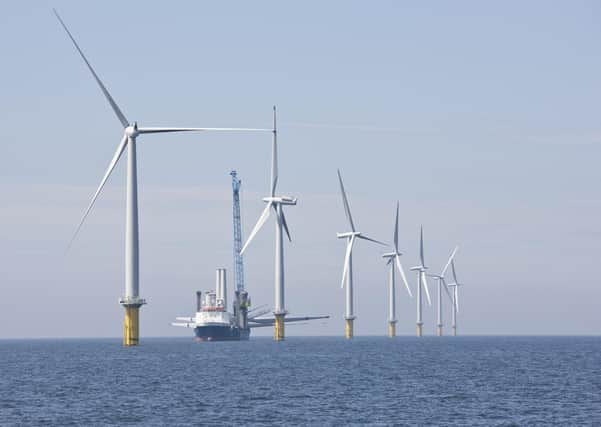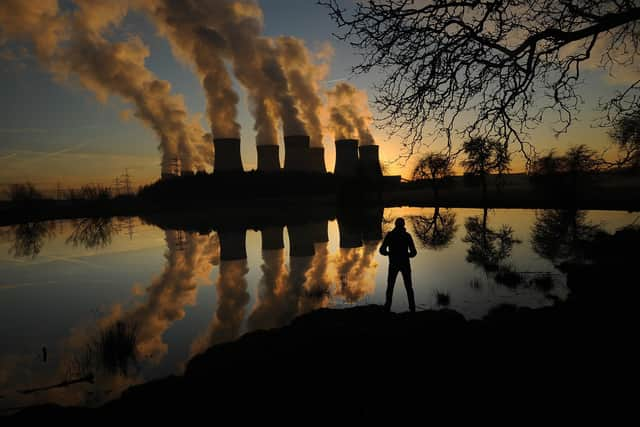How Hull and Humber will power green energy revolution – Kwasi Kwarteng


Over the past decade, a new British staple has been built out of the Humber – renewable energy. As an established renewable and industrial heartland, the Humber is the backbone for our green transition and an example to the many other industrial centres across the UK that they can go green: a crucial message for our economic recovery from coronavirus.
Tomorrow, I’ll be visiting the Siemens Gamesa blade factory in Hull, seeing first-hand how this spirit of innovation continues to drive forward the economic future of this proud region.
Advertisement
Hide AdAdvertisement
Hide AdSince its opening in 2015, the factory has supplied thousands of blades for offshore wind projects, employing hundreds of people to export our renewable expertise to the world.


With this kind of output, we have been able to build the world’s largest offshore wind farm, Hornsea Project One – and Project Two will overtake it when it is finished in 2023. More than that, this spirit of innovation is setting the whole of the UK on its future path as a truly global leader in offshore wind and renewable energy.
Westermost Rough was the first wind farm to use 6MW turbines, Race Bank and Dudgeon followed suit – all built out of the Humber, creating thousands of jobs and supporting British businesses to help construction and operations.
The 1.6GW of offshore wind off Yorkshire produces enough green energy to power over one million homes, with a further 6.4GW yet to be built. Offshore wind has become a crucial part of this country’s energy mix and will only get stronger in the years to come.
Advertisement
Hide AdAdvertisement
Hide AdNot only are we supporting this emerging industry to grow, we are also working hard to build on the expertise and infrastructure that we already have in place in pre-existing industries. I’ll also be visiting Centrica’s Rough gas platform off the coast of Hull – the site’s newly developed technologies for harnessing cleaner energy are another fantastic example of innovation in the sector, and how we can look to repurpose offshore structures in the future to better connect with our onshore grid.


It’s not all about just our offshore wind industry though. Government support schemes are driving the development of other new technologies, not least of all the way in which we make industrial processes less carbon-emitting – an area of innovation known as “decarbonisation”. Yorkshire is ahead of the curve when it comes to decarbonisation, with a skilled workforce ready to meet the challenge of reimagining historic industrial processes to suit the low carbon needs of our future.
Our transformation is clear in the work already under way across the county. At Drax power station, bioenergy with carbon capture and storage is being trialled to deliver negative emissions and we’re now in a position where we could possibly see the world’s first carbon negative power station this decade, right here in Yorkshire.
Hydrogen is another part of the renewables mix that has limitless potential, with the ability to power transport, heat homes and crucially cut emissions in industrial processes. That is why earlier this year we invested over £90m in the development and introduction of hydrogen energy to such industries as glass and cement that are essential to Yorkshire’s economy.
Advertisement
Hide AdAdvertisement
Hide AdIn Saltend we are already seeing renewable energy and heavy industry sit side by side, as a large-scale hydrogen demonstrator project takes shape amongst existing power plants. With the aim to produce clean hydrogen at scale by 2026, the project will lead the way for the rest of the UK’s manufacturing sites in cutting emissions.
Companies are also coming together as part of the Zero Carbon Humber project, exploring the preservation of the Humber’s rich industrial heritage while setting its course to become the first zero carbon industrial centre in the UK. We are investing £300m in projects like these: what we build in the Humber should improve what already exists, rather than replace it.
There are those who argue that a green recovery is not compatible with protecting and creating jobs against the backdrop of the coronavirus pandemic; that we must forgo our climate change ambition if we are to recover fully. The opposite is true.
Creating a clean, green low-carbon economy will spark the resurgence of our industries, create new skilled jobs, and see the UK continue its trajectory as a world leader in the international fight against climate change. This resurgence begins with the Humber.
Advertisement
Hide AdAdvertisement
Hide AdKwasi Kwarteng is Minister for Energy and Clean Growth. He is a Conservative MP.
Editor’s note: first and foremost - and rarely have I written down these words with more sincerity - I hope this finds you well.
Almost certainly you are here because you value the quality and the integrity of the journalism produced by The Yorkshire Post’s journalists - almost all of which live alongside you in Yorkshire, spending the wages they earn with Yorkshire businesses - who last year took this title to the industry watchdog’s Most Trusted Newspaper in Britain accolade.
And that is why I must make an urgent request of you: as advertising revenue declines, your support becomes evermore crucial to the maintenance of the journalistic standards expected of The Yorkshire Post. If you can, safely, please buy a paper or take up a subscription. We want to continue to make you proud of Yorkshire’s National Newspaper but we are going to need your help.
Advertisement
Hide AdAdvertisement
Hide AdPostal subscription copies can be ordered by calling 0330 4030066 or by emailing [email protected]. Vouchers, to be exchanged at retail sales outlets - our newsagents need you, too - can be subscribed to by contacting subscriptions on 0330 1235950 or by visiting www.localsubsplus.co.uk where you should select The Yorkshire Post from the list of titles available.
If you want to help right now, download our tablet app from the App / Play Stores. Every contribution you make helps to provide this county with the best regional journalism in the country.
Sincerely. Thank you.
James Mitchinson
Editor.
Comment Guidelines
National World encourages reader discussion on our stories. User feedback, insights and back-and-forth exchanges add a rich layer of context to reporting. Please review our Community Guidelines before commenting.